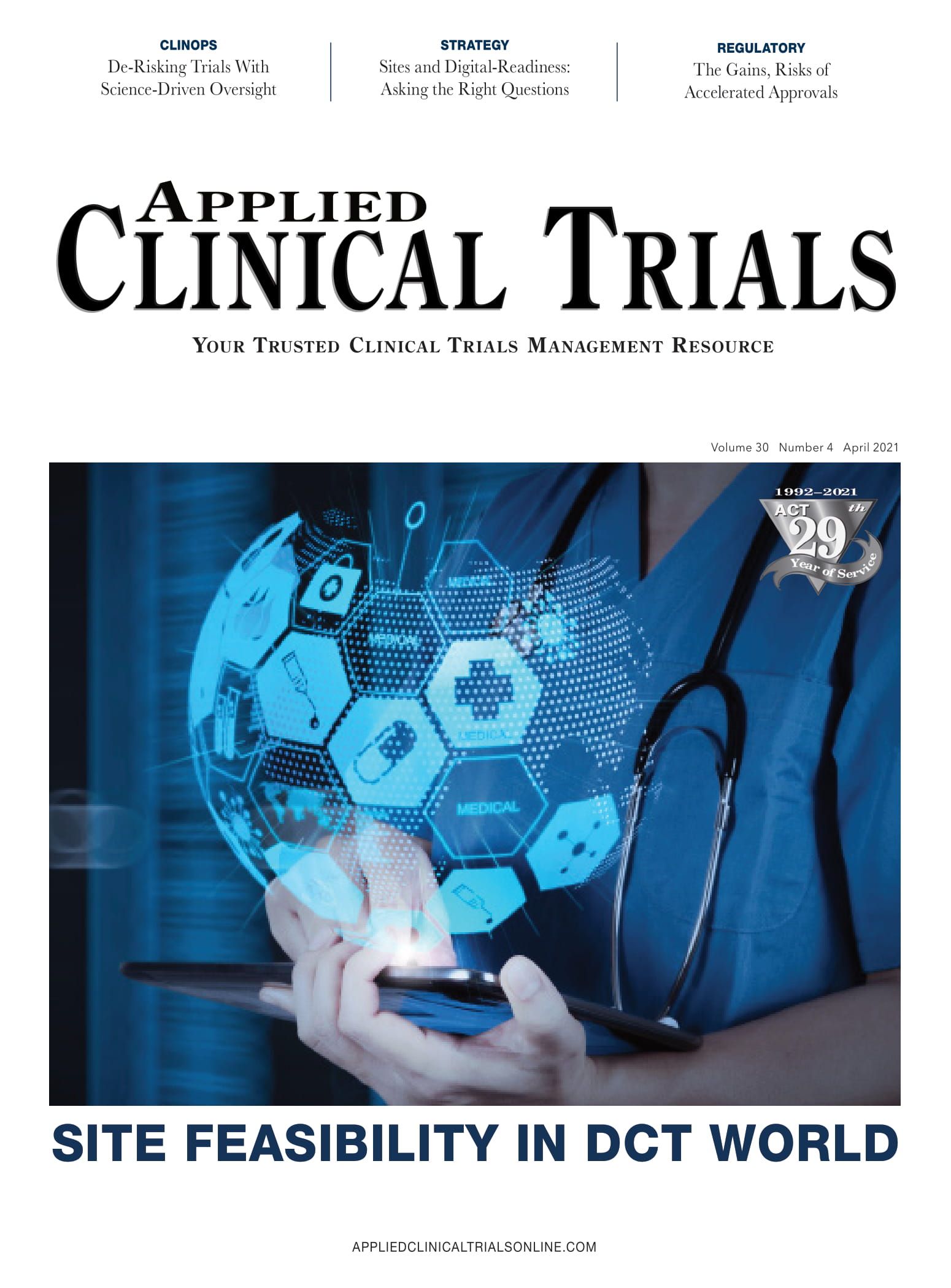Revamping Site Feasibility as Trials Become Decentralized
How asking better questions and leveraging site databases can expand access to more patients.

The COVID-19 pandemic has been credited with exposing longstanding challenges in clinical trials,1,2 including the perpetually inefficient site feasibility process. Finally, this critical step is receiving the attention it deserves, maybe even an overhaul, as the wave of clinical trial decentralization surges on. This effort involves re-thinking the kinds of questions to ask in feasibility questionnaires, now that sites have reopened, and are coping with unprecedented numbers of remote study visits, and increased reliance on digital tools.
Determining a site’s digital readiness is essential, as the pandemic seems to have created the opportunity for access to a broader range of patients, beyond those who live near a site, to include those in rural or in lower income areas, allowing sponsors to meet diversity and geographic targets. Complementing this trend is the growing use of investigator digital platforms designed to eliminate the repetitive nature and drudgery associated with site feasibility.But according to Jeffrey Kingsley, founder and CEO of IACT Health in Columbus, Georgia, there is still a long way to go. “So far, few sponsors and contract research organizations (CROs) are leveraging their databases to eliminate a lot of the questions we get all the time. For example, we are still constantly asked, ‘Do you have a freezer?’ We get this question even from companies we’ve done many clinical trials for. Fortunately, since COVID, this is slowly starting to change,” he explains.
To explore the changes happening to the site feasibility process, Applied Clinical Trials interviewed several experts in this field, representing a site, investigator platforms, and vendors. They offer decades of experience and insight into pre- and current COVID efforts to revamp this pivotal first step in increasing the likelihood of a successful trial.
Improving site feasibility
Site feasibility starts by understanding the responsibilities of sponsors and investigators as defined in the International Conference of Harmonisation-Good Clinical Practice (ICH-GCP) Guidelines,3 and in the Code of Federal Regulations.4 Notably, these guidelines explain what a qualified investigator is, and the requirement of sponsors to select those investigators to carry out a clinical trial in accordance with a protocol. With this regulatory foundation, the site feasibility process involves choosing sites that not only conform to these requirements, but can also offer the best fit for specific studies, based on past performance, access to a database of appropriate patients, and the bandwidth to perform the study at hand. And with the shift toward decentralized clinical trials (DCTs) or hybrid versions, assessing a site’s familiarity with technology is being added to the process.
It all sounds so simple, but in practice, site feasibility has long been awkward and slow, and often more about checking boxes than turning to sophisticated databases and cloud-based solutions that could eliminate much of the redundancy.5 Today’s thinking suggests that if less time were devoted to repeatedly asking the same questions, more time would be freed up to build relationships and improve communication with sites that have a proven track record in various therapeutic areas.
A recent article by Kurbegov et al. of the American Society of Cancer Oncology (ASCO) describes a Task Force that was convened to evaluate the burdens and challenges of site feasibility, which often lead to delayed study start-up and act as a barrier to site participation.6 With input from sites, sponsors, and CROs in the form of surveys and in-person meetings, the Task Force developed three recommendations for improvement, with a goal of speeding patient access to clinical trial participation, and ultimately, much needed new treatments, as shown in Table 1 below. The third recommendation—leveraging technology to centralize the feasibility assessment—is a nod to performing as much of this process as possible by teleconference due to the pandemic.
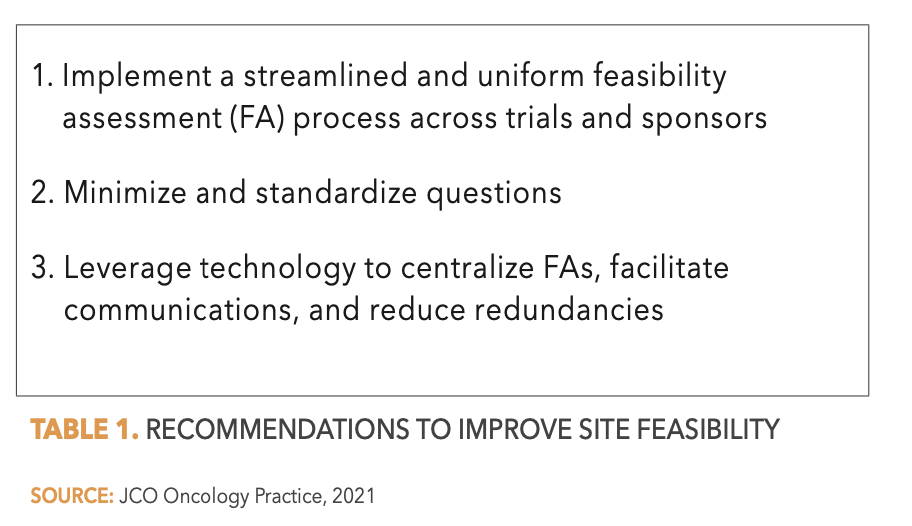
The site survey found that the 103 site respondents spent a median of 264 hours annually completing feasibility assessments, with all sites spending a combined 27,192 hours, at a conservatively estimated cost exceeding $1 million for input from the study coordinators alone. Importantly, the stakeholders agreed that standardization will reduce burdens associated with site feasibility, and most thought that sponsors and CROs should use the same set of standardized questions for this process, except for those linked to specific protocols.
These findings align with work from Alliance for Clinical Research Excellence and Safety (ACRES). The organization launched a Site Accreditation & Standards Initiative in 2013, with a goal of addressing the inefficiencies in the clinical trials process, and the lack of uniform standards.7 ACRES promoted the idea that without an accepted, consistent set of standards and accompanying metrics, it is impossible to compare performance across sites, a factor that is critical to site selection. In 2018, ACRES, in collaboration with the British Standards Institution, published its principles for developing standards in The New England Journal of Medicine,8 with an eye toward site accreditation, and the importance of viewing high performing sites as a critical resource.
Site feasibility during the pandemic
At first glance, the changes spawned by the pandemic seem mostly focused on adding questions to the feasibility questionnaire about the status of technology adoption, and whether potential patients are able to participate in televisits, or use apps for patient reported outcomes (ePRO) or eConsent. A closer look, however, reveals those questions as a first step toward using the site feasibility process to expand the geographic area of patients available for study participation.
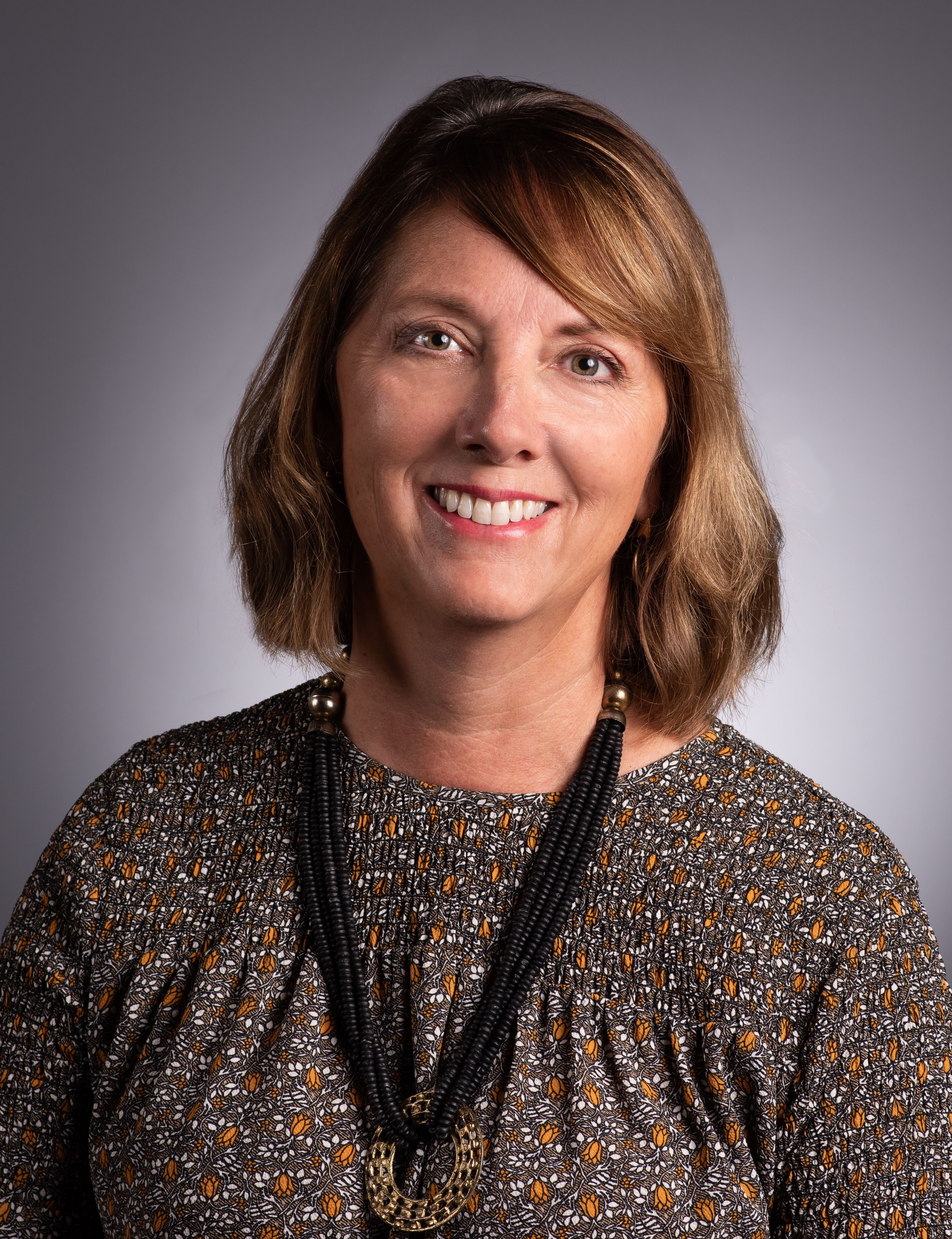
Mary Costello, head of Site Investigator Network at Medable, a provider of a DCT platform, describes the kinds of pre-qualifying technology questions to be asked for achieving this goal. “These questions might include asking if they have a patient database that tracks details, such as whether patients have smartphones. Do the patients have reliable high-speed internet? If they aren’t comfortable with technology, do they live with someone who can help them log on? We’re in a new era, and you don’t want to leave this information to chance. Successful feasibility is becoming more about anticipating and planning. Anyone who is getting ahead of these questions has a competitive advantage,”
Costello mentions.
She adds further that the pandemic has provided sites with a unique opportunity to expand their outreach beyond patients who live close to a site. “This is a turning point for the industry. Sites have existed on single digit margins for years, and have been limited to a drivable catchment area. Now, a patient might do a one to two-hour drive to an appointment if the rest of the visits can mostly be done remotely. I would suggest enhancing marketing efforts to broader, more diverse communities, as DCT imagines that we can bring in a whole new crop of clinical trial participants,” explains Costello.

Similarly, Diane Carozza, VP, clinical strategic solutions, study planning & site optimization at WCG, comments on how for the first time, site feasibility strategies are having to consider ethnic diversity and inclusiveness for patient recruitment. “We’re on the cusp of a big shift in diversity inclusion that the pandemic is fueling. It’s turning into something that isn’t just a ‘nice to have’. The FDA is calling out sponsors who are submitting applications for indications that have proven epidemiological prevalence data that certain ethnicities have a higher prevalence than others. Carozza explains they are asking, “What are you doing from the beginning to ensure that you include those groups in your trial?”
Investigator platforms
Attempts to improve site feasibility efficiency have been underway for several years among a handful of organizations, as shown in Table 2 below. Generally, uptake of these efforts was slow,6 but the pandemic brought big change.
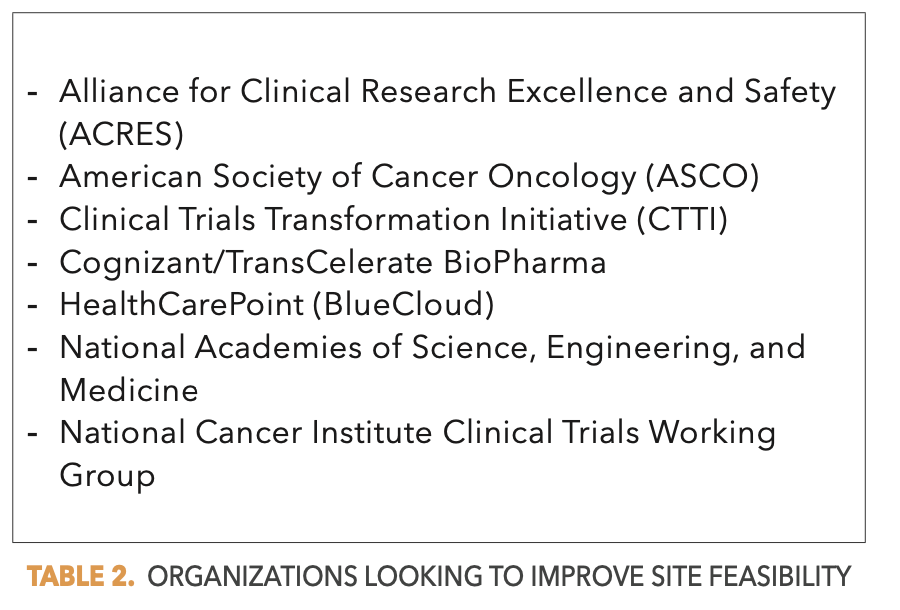
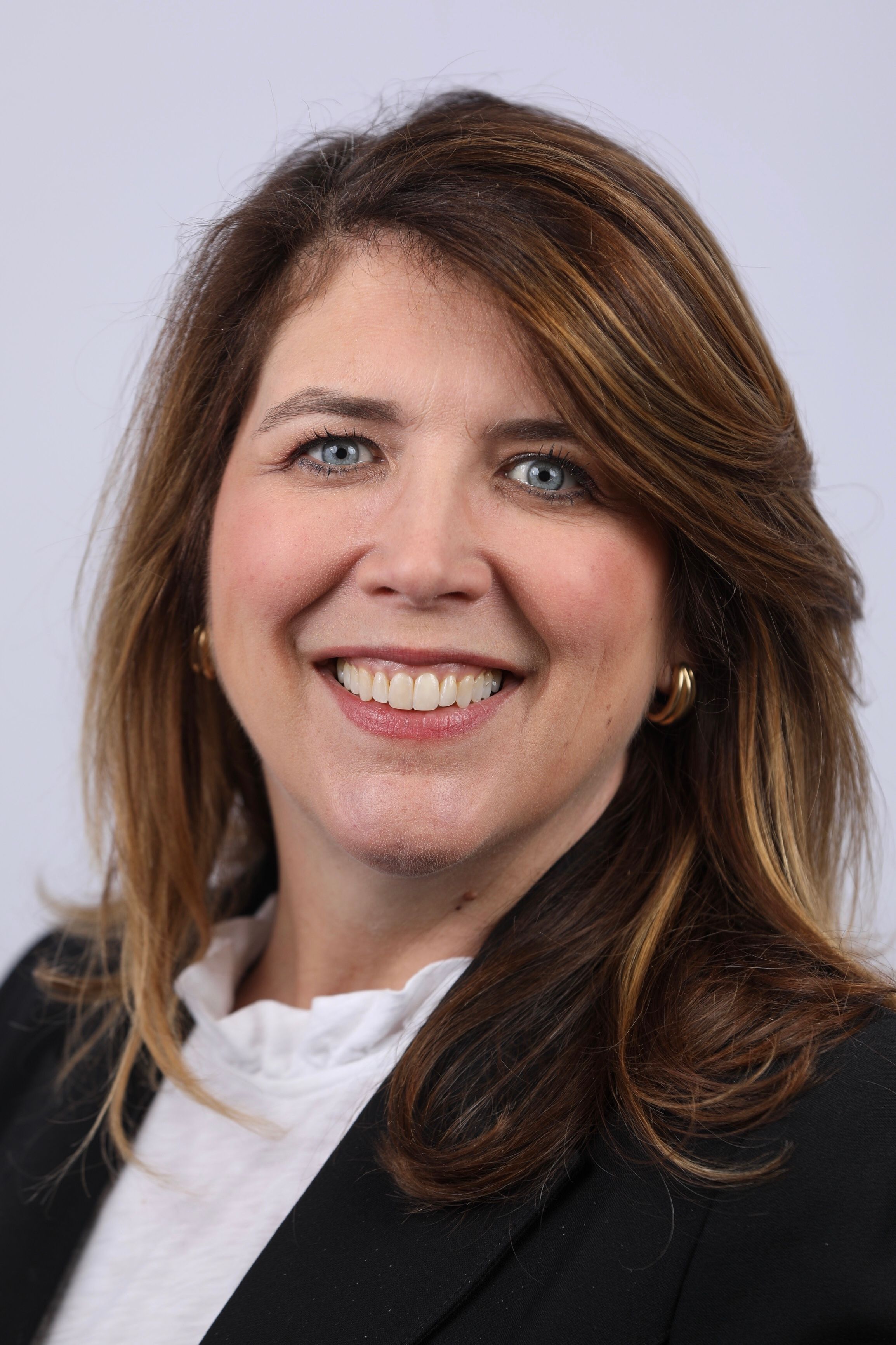
One of the most visible initiatives is the Shared Investigator Platform (SIP), which was created by TransCelerate BioPharma as an industry-wide solution to the problem of sites having to learn, access, and maintain excessive numbers of portals. SIP was designed with and for sites so they would have a centralized platform for providing information that would be available to multiple sponsors, and would eliminate the burden of repeated duplication of responses. In 2019, TransCelerate considered their SIP project to have met its initial objective, and as originally agreed, ownership of the platform and the intellectual property transitioned to Cognizant. Since then, the company has made significant progress towards establishing SIP as a core platform for clinical operations teams.
Larissa Comis, product owner of the SIP at Cognizant, explains that with the permanent changes to clinical trials brought on by the pandemic, sponsors are keenly interested in sites’ technological abilities to enable virtual collaboration and communication through SIP. As evidence, platform use has grown substantially in the past year, as shown in Chart 1 below. According to Comis, “We now have 146,000 users of SIP, which represents 125,000 site researchers. The rest are sponsors, including 21,000 study teams. SIP is used in 98 countries, in about 25,500 different locations.”
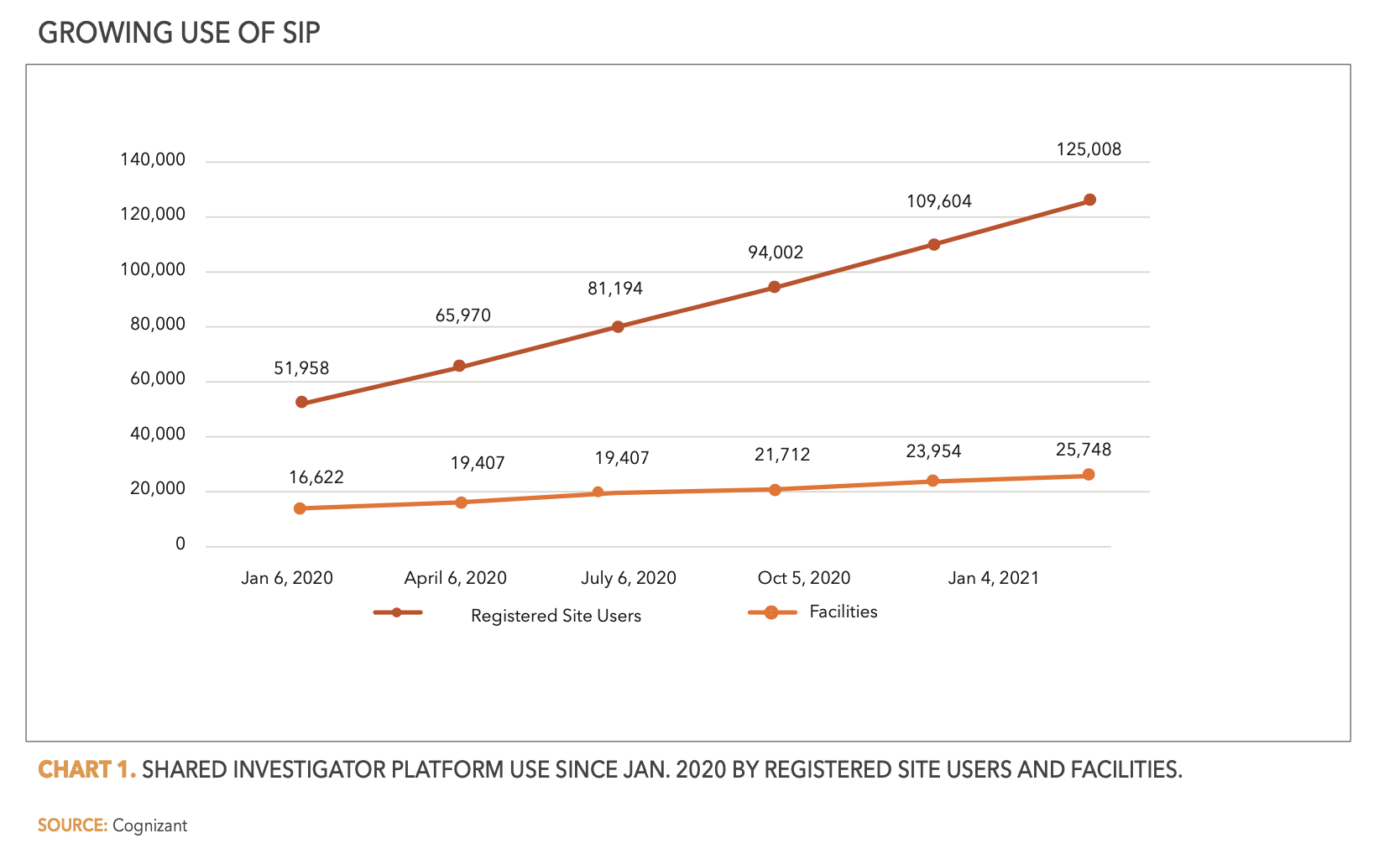
Comis explains that Cognizant was already seeing an uptick in adoption before the pandemic that extended into the early months of 2020. “What was interesting was that other than the first few weeks of the lockdown in March 2020, we did not see a huge fallout of adoption, which amazed us. We were expecting the activity to significantly drop, but it picked right back up really quickly. Now, we see 2021 as totally taking off on the site side and on the sponsor side. We attribute this to the growing use of decentralized clinical trials,” she says.

Jeffrey Kingsley explains that IACT Health is part of an investigator platform through hyperCORE International, a legal partnership of 10 high performing companies. IACT is a founding partner of hyperCORE, which started in 2019, and has evolved into a large, global clinical research site organization with more than 90 sites. To improve efficiency in site feasibility, all of the companies are mandated to use Devana Solutions, a site feasibility technology built on the Salesforce platform. Devana can instantly display and report trial performance metrics on all historic and currently running studies captured in the system. Kingsley remarks, “Within that software, we know everyone’s performance on specific types of trials, and with that transparency of the data, sponsors and CROs can easily see the best sites for their studies.”
What’s next for site feasibility?
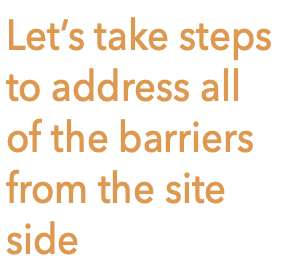
Looking forward, Kingsley comments, “It’s about data, data, data.My wish for the industry is that we use data to eliminate all of the waste in the feasibility process. Stop wasting our time asking if we have a freezer. Let’s take steps to address all of the barriers from the site side, such as listening to our input as to how protocol design will impact recruitment and enrollment.”
To secure overall improvement to site feasibility in the long term, stakeholders are focusing on asking the right questions once, rather than repeatedly, all in an effort to speed the finding of the right sites with the right patients and digital readiness for DCTs. Technologies such as electronic health records, internal databases, and investigator platforms will be key as sites use this opportunity to meet enrollment goals by expanding their outreach to patients in underserved and more distant communities.
References
- Henderson L. COVID Exposes the Cracks in Trial Problems. Applied Clinical Trials. August 2020. Available at: https://www.appliedclinicaltrialsonline.com/view/covid-exposes-the-cracks-in-trial-problems. Accessed March 10, 2021.
- Cotliar J. How a Pandemic Accelerated the Adoption of Virtual Trials. Global Forum. May 2020. Available at: https://globalforum.diaglobal.org/issue/may-2020/how-a-pandemic-accelerated-the-adoption-of-virtual-trials/. Accessed March 10, 2021.
- ICH Harmonised Guideline: Integrated Addendum to ICH E6(R1): Guideline for Good Clinical Practice ICH E6(R2). International Conference on Harmonisation. Available at: https://database.ich.org/sites/default/files/E6_R2_Addendum.pdf. Accessed March 12, 2021.
- Code of Federal Regulations. Subpart D—Responsibilities of Sponsors and Investigators Electronic Code of Federal Regulations. Section 312. March 2021. Available at: https://ecfr.federalregister.gov/current/title-21/chapter-I/subchapter-D/part-312. Accessed March 12, 2021.
- Barrett J. Choosing The Right Solution: Improving the Clinical Trial Site Feasibility Process. WCG. 2016. Available at: https://www.pharmavoice.com/wp-content/uploads/wp-WCG-03122019.pdf?tracker. Accessed March 13, 2021.
- Kurbegov D, Hurley P, Waterhouse D, et al. Recommendations to Streamline and Standardize Clinical Trial Site Feasibility Assessments: An ASCO Research Statement. JCO Oncology Practice. 2021:17(1):41-51. Available at: https://ascopubs.org/doi/full/10.1200/OP.20.00821. Accessed March 11, 2021.
- Site Accreditation & Standards Initiative (SASI). Alliance for Clinical Research Excellence and Safety (ACRES). Available at: http://www.acresglobal.net/about-us/initiatives/site-accreditation-and-standards-initiative-sasi/. Accessed March 13, 2021.
- Koski G, Kennedy L, Tobin MF, et al. Accreditation of Clinical Research Sites—Moving Forward. New England Journal of Medicine. 2018;379:405-7.
Ann Neuer, MBA, President, Medical deScriptions, LLC
